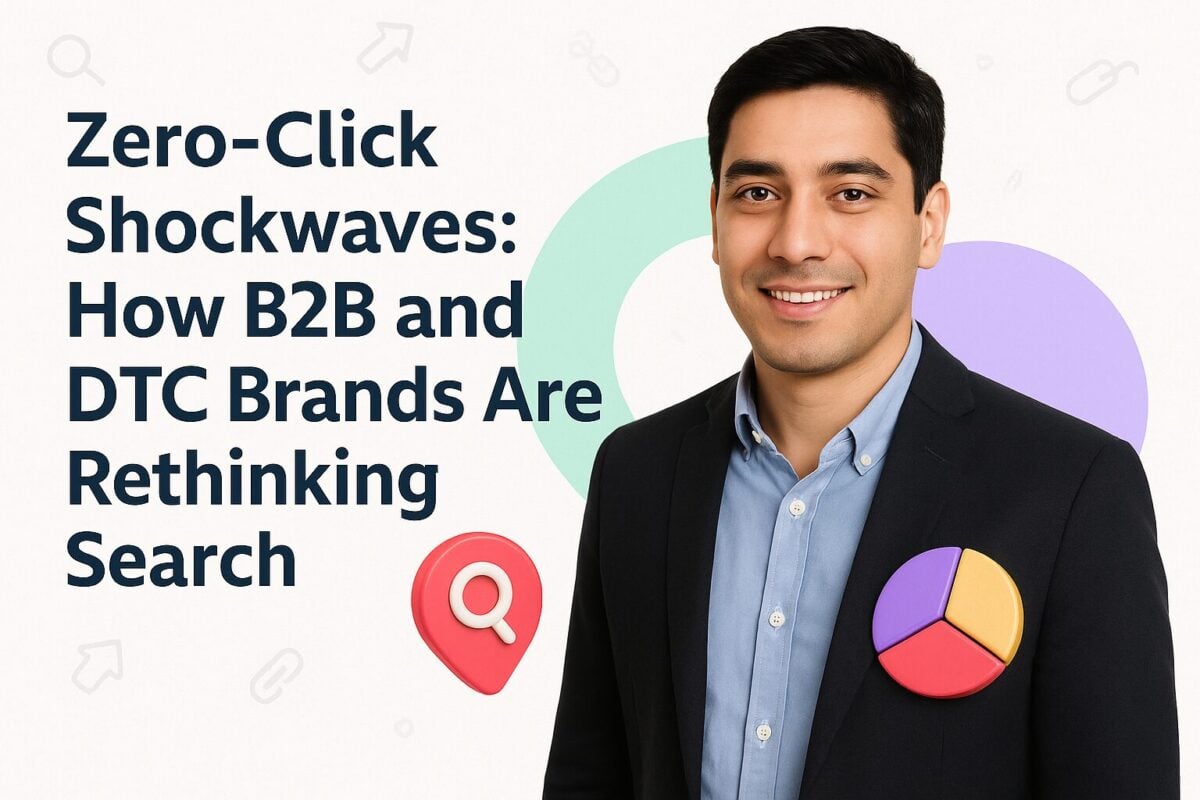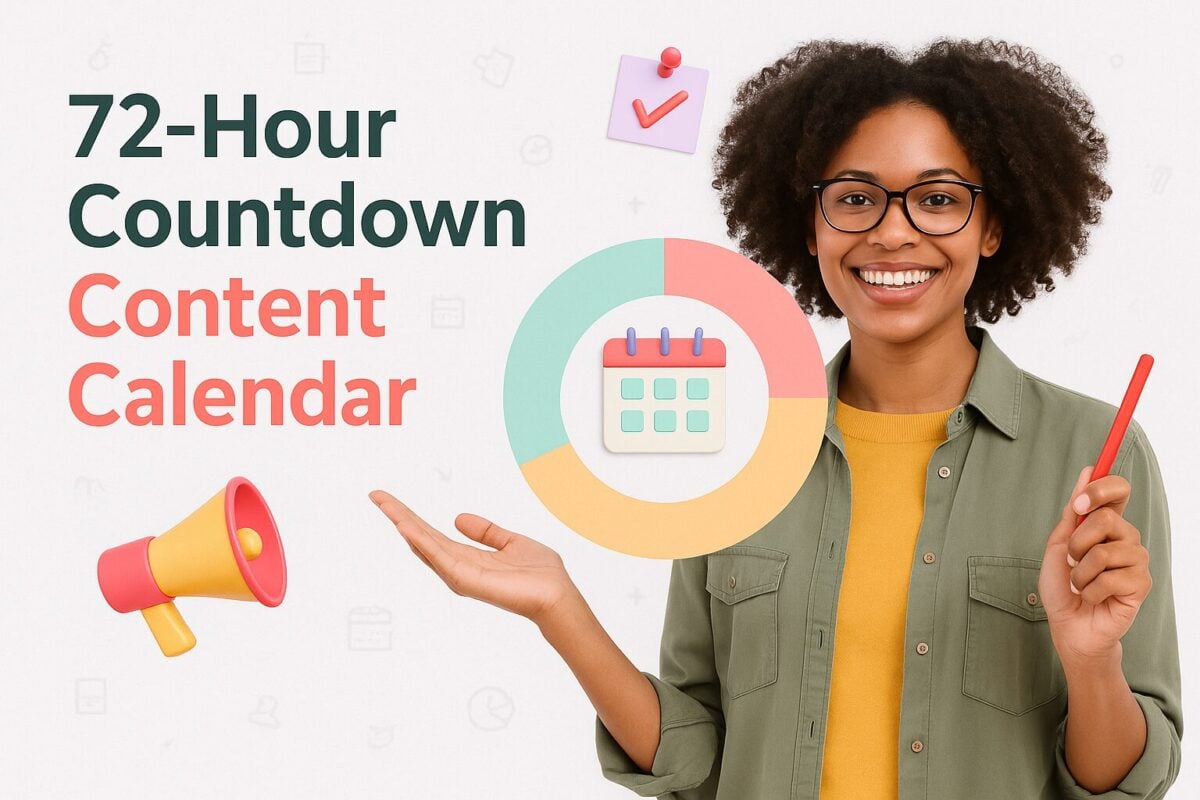Launched in 2015, the Google Local Guides Program isn’t a new feature. However, with Google introducing a number of significant changes to its ranking criteria, this old program can potentially help businesses with the new SEO challenges in 2024.
Ranking factors aside, it can also be a great way to encourage customers to create more user-generated content (UGC) for your business. Going forward, UGC will remain foundational to content marketing, with online reviews being one of the most powerful forms.
Here’s an overview of the program, along with ideas on how you can include it in your local SEO strategy to improve local visibility.
The Google Local Guides Program: Can It Boost SEO?
What’s the Google Local Guides Program?
The Google Local Guides Program is a type of incentive program designed to get more users to add info to Google Business Profiles and Google Maps.
It’s pretty straightforward and uses points as an incentive. Actions that will earn you points include:
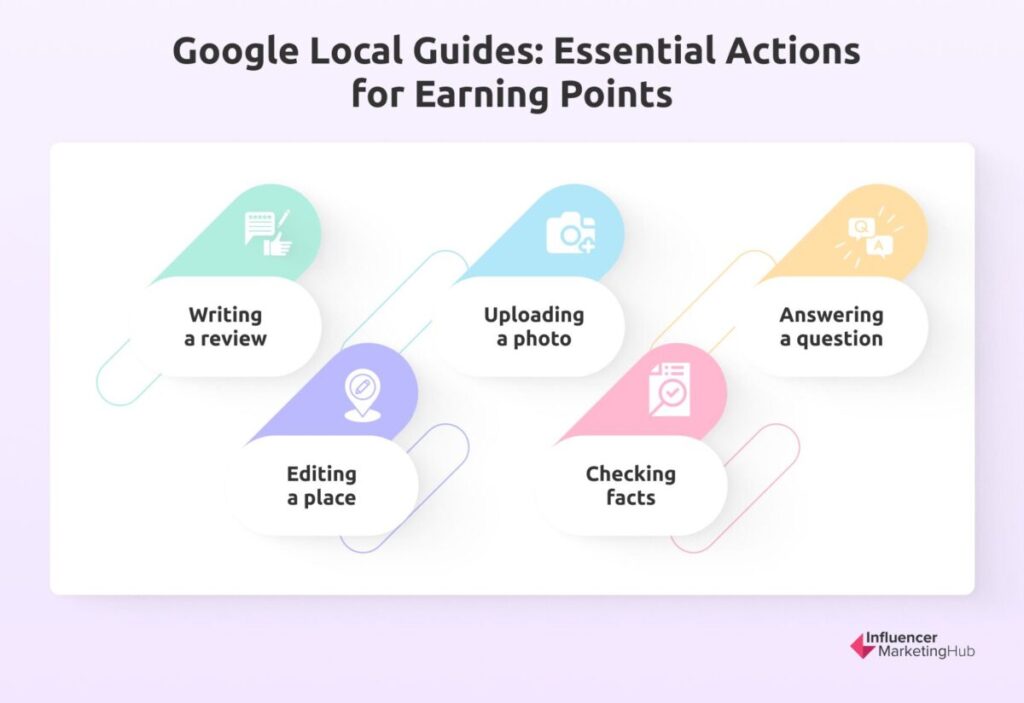
- Writing a review
- Uploading a photo
- Answering a question
- Editing a place (or adding a new one or missing establishment)
- Checking facts already published on Google Maps
Based on the number of points, Guides will move up to a different level and unlock other benefits.
Basically, it serves to recognize those users who make others’ decision-making process easier, whether that’s by suggesting what’s the best place for your morning coffee or announcing the opening of (another) nearby vegan restaurant.
Who Can Join?
To receive these rewards, you need to sign up to become an official Google Local Guide. One important thing to note here is that only individuals can sign up. While businesses or business pages can contribute, their contributions won’t unlock the program’s benefits.
Individuals also need to have a Google account (and for that you’ll need to meet the age requirements of your country).
This brings us to the next criteria — location. You can only become a Local Guide, if your country has Google Maps. Only a handful of countries have blocked it, so this shouldn’t be an issue. That said, location won’t limit the places that you can review. Guides can review virtually any place across the world.
It’s important to note here that anyone can contribute to Google Maps. However, you’ll only qualify for rewards if you’ve signed up for the actual Google Local Guides program.
The actual sign-up is just as straightforward as the eligibility criteria. All you need to do is pick your city and tick the box next to “I agree to the program rules”.
What Are the Rewards?
As mentioned earlier, official Google Local Guides will receive points. Unlike many other types of member programs where you can exchange points accumulated for cash or discounts, this isn’t the case with the Google Local Guides Program. Instead, you can only move up a level.
That’s why we referred to this program as an incentive program and not a rewards program.
The number of points you’ll receive is based on the specific action you take. Here’s how Google rewards the different types of contributions:
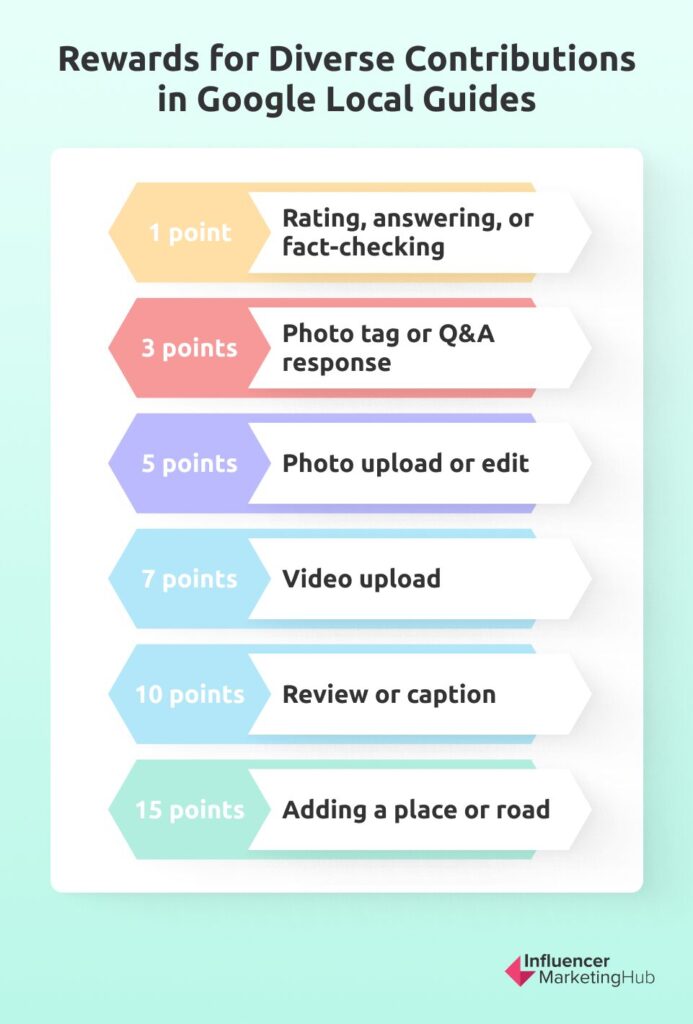
- 1 point for posting a rating, an answer, or checking a fact
- 3 points for adding a photo tag or responding to a Q&A
- 5 points for adding a photo or making an edit
- 7 points for adding a video
- 10 points for adding a caption in a photo update or writing a review (and if the review has over 200 characters, 10 bonus points will be added)
- 15 points for adding a place or road
So, the activities that will get you the most points are adding a place or road to Google Maps.
Here’s how it will look in practice:
Let’s say you discover a deli that’s off the beaten path. You want to share your new secret spot with the masses. If you add the place, write a review that’s longer than 200 characters, and upload a photo, you’ll earn 40 points.
These actions will automatically take you to Level 2 (for which you’ll need 15 points at least). Though, to get a badge, you’ll need to reach Level 4 and to do that requires 250 points.
All in all, there are 10 levels. To reach the last level, you need 100,000 points. That’s a whole lot of contributions.
Aside from the badge, Google is pretty vague about the other benefits that you can get as you climb this ladder. The information shared in its Help Center only mentions early access to Google features and rewards from partners.
One Guide, Anastasia shares in a blog post on Medium that her perk for writing about 50 reviews was four-month subscription to The New York Times’ online games.
Using Local Guides’ Reviews for Local SEO
While businesses can’t participate in this program, they can use reviews to improve their local SEO. Small businesses mainly targeting local target markets in particular need to take note.
According to Google’s own information, they use the following three factors to calculate local rankings:
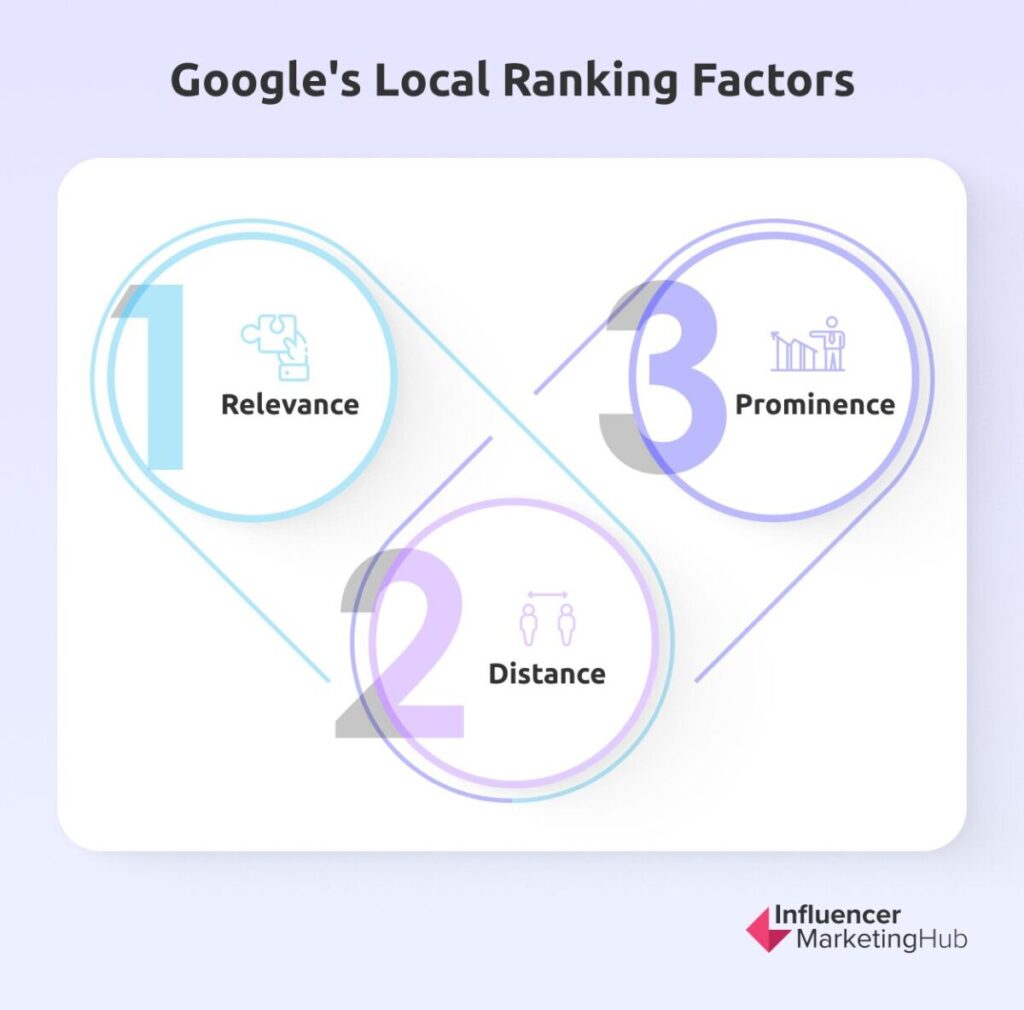
- Relevance
- Distance
- Prominence
It’s that last factor - prominence - that you can influence with reviews. Basically, it refers to how well known your business already is. So, if you’re one of the landmark places in the area, you’ll likely get a better ranking in local search results.
However, the search engine will also take into account your Google review count and score. In other words, if you have more positive reviews, you can boost the local ranking of your business.
Now, to get more reviews, focus on your Google Business Profile and your own responses to reviews received. Here’s how:
Maximize your Google Business Profile
We’re working on the premise that you’ve already claimed your Google Business Profile. If you haven’t, do so immediately. The process is simple and Google will use it to boost the local ranking of your business.
Once you’ve claimed your profile, you’ll appear on Google Maps, making it easier for Google Local Guides to earn points.
Then, ensure that you add all the details so that Guides can review you only on the actual experience and not technicalities. Two of the things that Local Guides like to deduct stars for are inaccurate details, like wrong street number, or missing information, like neglecting to mention your cuisine, for example.
Part of maximizing your Google Business profile is to review and update it regularly. For example, if your business hours change during winter, take the time to update it. If you have a seasonal menu, add a photo. As mentioned, outdated information like these examples can sour the user experience, giving Guides a legitimate reason to give you only an average star rating.
Respond to reviews
Another reason why it’s important to claim your listing is so that you can respond to the reviews. Victorious, one of the most affordable SEO agencies for businesses, is a big advocate for taking the time to respond.
Crystal Diaz, an award-winning SEO strategist, explains on the agency’s blog that responding to reviews gives Google new content that it can use for indexing your pages. What’s more, it gives you an opportunity to add relevant keywords in your response, to maximize the SEO value further.
Aside from that, responding to reviews can also help you to attract more reviews. It builds rapport with your past and future customers. Plus, as Google highlights, it shows to your target market that you value their input.
And, if you’re thinking about using Local Service Ads, the search engine will use your response rate and review rates as ranking factors. With Local Service Ads, you get charged per lead generated instead of click as is the case with Google PPC ads, making it a cost-effective alternative to small businesses.
Addressing Bad Reviews
When it comes to reviews, it’s not a matter of quantity over quality. Google also pays attention to the score. Not only could negative reviews damage your reputation, but it can also hurt your ranking.
One of the issues that a number of online sources highlight with the Local Guides program is the gamification element. As soon as you introduce an incentive, even if it’s only (pointless) points, there’s a chance that people might contribute for the wrong reason.
As Cloutly, a reputation and review management platform, puts it, Guides’ motivation is “a quick hit of dopamine”. In other words, they’re in it for their own high, instead of helping local businesses rank higher. A potential result — inaccurate reviews.
Sure, Local Guides must stick to Google’s user-generated content policy. However, it’s difficult to implement.
Google also uses automated spam detection to remove reviews that are very likely spam. Though, Google admits that it’s not as accurate and legitimate reviews can be inadvertently removed. It goes to argue that the reverse is also probable and that spammy reviews can go undetected too.
The best recourse that businesses have if they spot fake engagement (content that doesn’t represent a genuine experience) is to report it to Google.
Semrush suggests that if you suspect an insincere review, you check out the profile of the specific Local Guide. Then, use your analytical skills to see if you can spot any pattern of fake engagement. If the Guide simply copies and pastes the same review to multiple business profiles, you might be onto something. For example, the same Guide finding hair in his food at all the places that he’s dined recently is highly unlikely.
If Google finds that the content indeed violated their policy, they’ll remove it. This process can take several days, though.
Content that can be labeled as relevant or factually incorrect can’t be removed. Google is very clear that you can’t report content simply because you don’t like it.
Another strategy is to be proactive. Both Cloutly and Semrush recommend that you launch a campaign to encourage actual customers to leave reviews. This way, you can “drown out” the bad reviews, whether those were left to make a valid point about a recent experience or simply to get more points.
There’s nothing preventing you from asking customers straight up to post a review. In fact, Google encourages it and suggests that you share a link with customers to make it easier. (Ironically Google forbids businesses from offering incentives in return for reviews, yet their own program to encourage users to leave reviews is built upon incentives.)
You can find this link by going to Google Search and clicking on “Ask for reviews”. Alternatively, you can use Google Maps, click on “Customers” and under the Reviews tab select “Get more reviews”.
TLDR Summary: Using Google Reviews for Ranking Higher
Encourage reviews: Aside from serving as social proof, Google Reviews can improve your local ranking on the search engine. Share a link with customers in a follow-up email, for example, as a reminder and to streamline the process.
Respond to reviews: Your response is an opportunity to show that you value your customers (or do damage control). Replies should always be professional and formulated using relevant keywords.
Use the tools Google gives you: While the Google Local Guides Program is more aimed at customers, Google gives businesses tools like Google Business Profile and Local Service Ads. Use it.
Frequently Asked Questions
How can you improve your local SEO efforts?
To help you boost your local visibility, try the following:
- Claim your Google Business Profile and ensure that all the info gets added and updated regularly
- Add your NAP details to key web pages
- Use reputable local directories
- Incorporate the right local keywords
- Improve your linking structure
- Add your location to key sections like headings and the URL
- Encourage customers to leave online reviews
What are Local Service Ads on Google?
Local Service Ads, an ad solution offered by Google, help businesses to feature more prominently in relevant local searches and target local customers. Ads will be shown to people located in your area who are searching for the service or product offered by your business. You’ll only be charged for customers that contact you directly via the ad, unlike Google PPC ads that charge per click.
How can you embed Google reviews onto your website?
You can use tools like Taggbox or Elfsight to embed Google reviews onto your business website. Both these tools give you the option to configure a widget for Google reviews. Be sure to add a mixture of five-star, four-star, and three-star reviews to keep it more authentic. Then, remember to update the widget regularly so that new reviews also get added.
Which agencies are good for online reputation management?
The following agencies have a proven track record for online reputation management:
- NinjaPromo
- Thrive Internet Marketing Agency
- Milk & Honey PR
- Go Fish Digital
- Idea Grove
- Reputation Rhino
- WebiMax
Which are the best agencies for local SEO?
According to sources across the web, the following agencies are the best for local SEO strategies:
- SmartSites
- Victorious
- Thrive Internet Marketing Agency
- WebFX
- Straight North
- Disruptive Advertising
- Ignite Visibility
- SEO Brand
- Titan Growth

